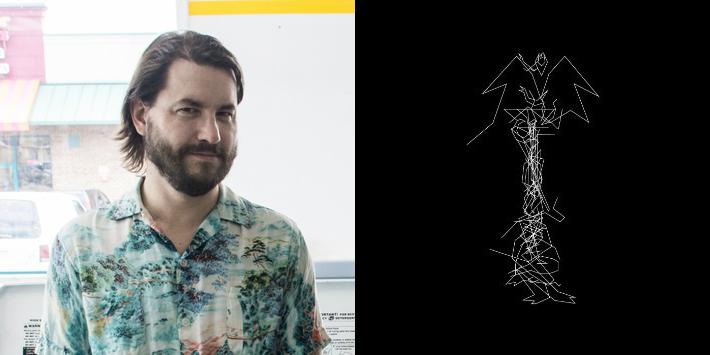One of the great things about the Talkhouse is, it’s an index of the music that musicians are actually interested in — which is not necessarily the music that the industry is hyping. And while we have smart, notable musicians writing about those records all year long, sometimes we miss some stuff. And so we’ve devoted this week to Stuff We Missed: our best writers cover some outstanding (and perhaps not so outstanding) albums that came out in 2015.
— the editors of Talkhouse Music
To get the full disclosure/conflict of interest/weirdness out of the way, I was excited to write about Oneohtrix Point Never’s Garden of Delete because I love this record, duh, but also because the thought of writing about it makes me flinch and blush and feel uncomfortable — which is itself a signature OPN feeling, a paranoiac swirl of proximity and doubt in the midst of immediate pleasure: is this going to be awkward? My band has remixed OPN, and we’ve played a show together in Brooklyn, and deejayed a party together, and I’ve stashed our gear at Daniel’s apartment, and we’ve hung out backstage at European festivals and such. More substantively, Daniel Lopatin’s key collaborator is video artist and live touring member Nate Boyce, who is formerly a touring member of Matmos, has made videos for my solo project, and is both a former student and friend. So, the stage is set for “sticky drama” insofar as what I say might seem like either unctuous nepotistic slobber or bitchy betrayal.
It’s weird yet apt to talk about this album under the umbrella of “Stuff We Missed,” insofar as the modern world of music marketing now dictates an increasingly labyrinthine and laborious dance of the seven veils before a clickable commodity can be disclosed. Nobody missed that this album was coming out, because the rollout of Garden of Delete was a wonderfully passive-aggressive hype-stravaganza: the creation of purported source band Kaoss Edge and helpful exegete character “Ezra” was a pranksterish, esoteric in-joke tilted off-axis from typical PR TMI. The other side of the coin was anarcho-democratic and open source: giving away the album’s MIDI files before it has been released is a way of insisting upon the portability of melody over timbre, making the music into a shareable resource but also a challenge to see what happens to the tunes as tunes when Lopatin’s signature sound design is kept in reserve. Amidst the push-pull of these gestures that shut you out and let you in, no one who is paying attention could possibly miss that this album was coming out. But when so many articles are written about the pre-game, the actual album itself as a stand-alone artifact can go missing. Nowadays, climax becomes an afterthought to foreplay, which reinforces the heroic advocate or “insider” role of media itself; it valorizes a journalist to help break a record, while the interpretation of something that is already open to public judgment leaves journalists feeling already passé, like just another punter. The music becomes an appendage to, and ultimately a victim of, its own promotional machinery and cross-platform extras.
So let’s talk about that music. A statement of intent, “Intro”’s flanged and vocodered otherspeaking (the Greek meaning of allegory) recalls Kraftwerk’s “Voice of Energy,” warning us that there will be vocals, simultaneously soothing and frustrating us with vocals that are unintelligibly processed into oblivion. With Oneohtrix Point Never, blow-by-blow formal description can sound breathless, but here goes: “Ezra” leapfrogs past pause button edits, grunge-lite guitar figures and DJ Premier-worthy vocal chops before it’s hit the one-minute mark, only to sucker punch you with an ecstatic double-time synth riff that feels like some hidden level on a particularly manic and Sisyphean videogame, which freefalls into a drone wormhole, from which we crawl out with plucked-string bass, sarcastic (?) bell-tree and new age bric-a-brac, before a coda that restates those guitar figures and pirouettes to a conclusion. It’s an elegant summary of the “uncanny valley” aesthetic that brought us in the door after his previous album, R Plus 7, and recalls what made “Problem Areas” and “Chrome Country” so beguiling. But with success comes a clone war, and Bandcamp is currently rife with #vaporwave copyists whose plaintive presets and jumpcut edits feel Lopatin-esque yet deflationary, the sonic equivalent of a Print All Over Me T-shirt that looked better online.
Thankfully, copyists are bypassed and the auteur hammer comes down hard on “Sticky Drama,” in the form of a virulent earworm of a lead vocoder riff that I first heard when Nate played it for me after a show on his phone. Even then, the hook sounded potent, nasty. Once the song was released in conjunction with Jon Rafman’s baroque LARP goo-bath of a video, the goddamned vocoder riff on “Sticky Drama” was stuck in my head for days. Walking down the street, waiting in line at the corner store, trying to teach millennials about Spenserian poetry: there it was. At the end of a day, I would be brushing my teeth and there it would be, still cooing and coiling in my head. Lopatin’s possible production reference points are many: the electronic sackbut of Hugh LeCaine, Roger Troutman’s computerized eroticism in Zapp, Aphex Twin’s seasick honeydrip on “Windowlicker,” T-Pain’s gargled love cries; one could go on. But the context adds to its power and make it more than a kitsch style-tag. Yang to the vocoder’s yin, when the blast-beats, guitar-synth crunches and guttural Cookie Monster growls kick in on “Sticky Drama,” you suddenly realize that Lopatin has fashioned a kind of unheimlich homage not to r&b but to crabcore: that perfect storm of Hot Topic, MySpace and Guitar Center in which tight pants, pointy hair and knee injury momentarily made a suburban horde squat low for the break and wobble comically sideways en masse. Since I’m a sad old rave hag, my own reference points of choice are flung farther back: I might be hearing things, but I swear there’s a Mentasm stab breakdown in this song that is pure pleasure for me.
Regardless of all such citation, OPN has fashioned a new assemblage from familiar parts, one with expressive power that re-orients its components, extending them towards a future that’s just out of reach. Its gleeful courting of deliberate “bad taste” shouldn’t disguise the sense that this music feels formally and emotionally risky: the sticky factor here is that we are caught up in a complex web of identification when we work with the palette of source-aesthetics from which collage and assemblage are born. Basic questions are at stake in Lopatin’s sound-design choices: Do I like this? Is this good? Is this awkward? Is this embarrassing? What if my own self is just made out of other people’s spare parts? Playfulness and fear, ecstatic rush and murderous rage (see the source video for “Child of Rage”) have a funny way of turning into each other on Garden of Delete; swallowing a glut of information and biting through it, Lopatin has found a way to make bedroom production decisions feel like immanent questions of affiliation, belonging and choice that speak for, and to, a generation whose prosthetic selves have been ported online since early childhood. Fashioning mutant standards for an overheating planet, OPN makes the details glisten, rustle and glow, but beyond stylistic origami, he also makes them matter. For someone who is all too often trivialized and over-simplified into a smirk oriented postmodern ironist, that’s a sticky trick indeed.








